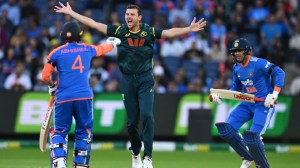Pesticide in north, it’s microbes down south
If leading bottled water brands in Delhi and Mumbai contain a deadly cocktail of pesticide residues, it is microbial contamination that is w...

If leading bottled water brands in Delhi and Mumbai contain a deadly cocktail of pesticide residues, it is microbial contamination that is worrying the authorities in Hyderabad and major cities in south India.
A leading company here that tests water of different brands from all over the country has admitted that microbial contamination has become common and the matter has been regularly brought to the notice of the Bureau of Industrial Standards (BIS).
In an exclusive interview, Dr A. Premchand, additional director of Vimta Labs, said microbial contamination had become worrisome though it was not yet time to ring the alarm bells. But if matters went unchecked, it could reach dangerous levels.
The Labs came out with the results following extensive testing of sealed drinking water bottles from various manufacturing units across the country that it received from the the BIS. This is because some of the standards prescribed by the European Economic Community (EEC) cannot be tested by labs run by the BIS.
While the BIS prescribes 84 norms for bottled drinking water to enter the market, the EEC has over 220 tests. Some of the tests to detect the residual pesticide components and microbial contamination are so exacting that very few labs in India can measure up to the standard, says Premchand whose lab has received international approval for testing.
Vimta, which has sophisticated facilities to detect even trace particles and residues, is today packed with bottled drinking water from various places. ‘‘We have pressed more people into service,’’ said Premchand.
Sources in the bottled drinking water sector admit that microbial contamination is mainly due to manufacturing units cutting corners. Air- conditioning units are switched off to save on power or the packaging sections are not kept sterile. Burdened by mounting transportation costs and competition by non-ISI brands, bulk drinking water units have started compromising on standards, admitted a source.
While authorities have not been able to check the non-ISI brands from entering the markets, there is no fool-proof mechanism to monitor the quality of hundreds of licensed bottled drinking water manufacturers.
‘‘We do get samples from various units and the reports are submitted to the BIS for suitable action. In some cases the licences have been suspended’’, admits Premchand. But water with microbial contamination still reaches the market place.
Meanwhile, the BIS has become active following the CSE report on the quality of bottled drinking water in Delhi and Mumbai. While the local governments have ordered an enquiry, the BIS feels that the situation elsewhere may not be much different.
The CSE report tested 17 samples and the results said they contained five pesticide residues, on an average 36.4 times higher than the EEC standards. Despite the brands having the ISI mark, bottled water contained residual levels banned in North America and Europe.



- 01
- 02
- 03
- 04
- 05



























